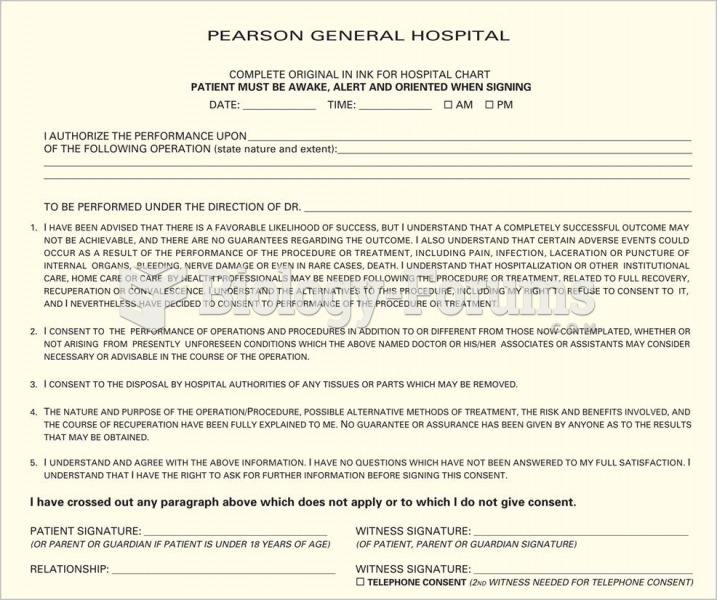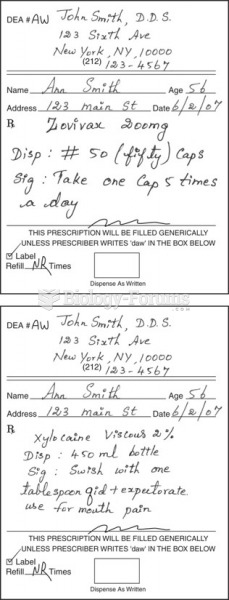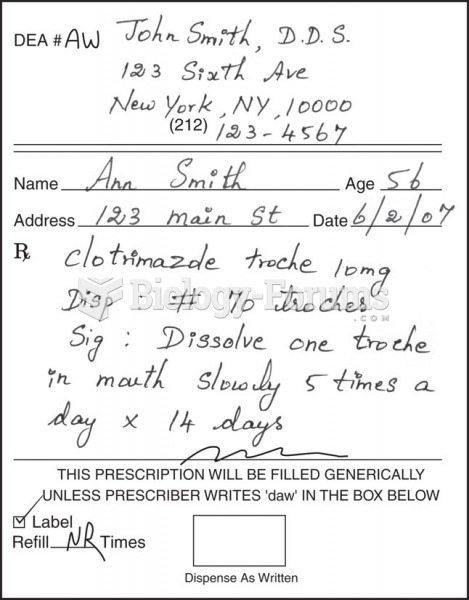This topic contains a solution. Click here to go to the answer
|
|
|
Did you know?
The average adult has about 21 square feet of skin.
Did you know?
There are 60,000 miles of blood vessels in every adult human.
Did you know?
Approximately 25% of all reported medication errors result from some kind of name confusion.
Did you know?
Chronic necrotizing aspergillosis has a slowly progressive process that, unlike invasive aspergillosis, does not spread to other organ systems or the blood vessels. It most often affects middle-aged and elderly individuals, spreading to surrounding tissue in the lungs. The disease often does not respond to conventionally successful treatments, and requires individualized therapies in order to keep it from becoming life-threatening.
Did you know?
The horizontal fraction bar was introduced by the Arabs.







